What is Industrial Internet of Things?
The Industrial Internet of Things stands for the Industrial Internet of Things, which, as the name suggests, refers to the Internet of Things Technology The use of interconnected machines, devices, and sensors in industrial applications. When using artificial intelligence and machine learning capabilities Modern ERP At runtime, data generated by industrial IoT devices can be analyzed and utilized to improve efficiency, productivity, and visibility. Industrial IoT networks often support machine-to-machine (M2M) Communications as well as in central systems and all IIoT Data is regularly transferred between integrated devices. Industrial Internet of Things technology is also Industry 4.0 Fundamental components of technology.
Working principle:Industrial Internet of Things Technology
Connection (and 5G)
Industrial IoT networks require the ability to send and receive large amounts of data generated by machines and devices. Traditionally, this is done via Wi-Fi Powerful connectivity enabled and restricted. But 5G And other cellular network developments are changing this calculus, increasing the bandwidth for managing larger data sets, It also reduces latency and power consumption. These features support more devices that can send and receive signals faster, For more efficient data processing and longer battery life.
Industrial Internet of Things Sensors
Nowadays,Sensors are often built into new industrial equipment and machinery. But analog machinery and manufacturing equipment can also be equipped with IoT gateway devices such as cameras and meters. This enables industrial IoT assets to detect conditions in their environment;,Including the proximity of other objects, air pressure, or humidity; - - And motor speed, liquid level, and other mechanical conditions. All of this information can then be processed locally to notify real-time operations or transmitted through the cloud to a central system such as ERP) for advanced analysis.
Cloud Computing Capabilities and Edge Computing
Cloud computing and edge computing technologies have greatly improved the flexibility and availability of the Industrial Internet of Things. Through the cloud, Industrial IoT networks can take advantage of high processing power and storage capacity on demand. This means that devices within the network can collect and transmit larger and more complex datasets. Edge computing simply means adopting systems that can process and analyze this data, and bringing this data into the local - Actually closer to an industrial IoT network. This helps reduce latency and latency and allows for real-time processing of time-sensitive IIoT Data. For a more in-depth, less urgent analysis,Industrial IoT data can be routed to a central AI-based system on a regular basis.
Artificial intelligence And Machine learning
With artificial intelligence and machine learning technologies, businesses are able to leverage advanced Analytics and predictive analytics process industrial IoT data. Modern databases and machine learning algorithms can also help businesses manage and understand various datasets, And unstructured and complex data. Through these tools, Industrial IoT data can be analyzed in virtually unlimited combinations with other types of data insights such as customer feedback, weather reports, marketing analytics, and more. As systems continue to learn, and data sets become more precise, companies can begin to collect increasingly complex and sophisticated insights and learning, null
Security of Cyberphysical Systems
Providing the same connectivity for industrial IoT networks puts them at risk. While most companies have strict security and access protocols around their central systems and databases, their IoT devices are sometimes relatively unprotected. Essentially, they can act as basement windows, with full access to systems with fairly security through traditional entry points. Fortunately,,Security protocols and technologies have largely kept up with advances in the Industrial Internet of Things. However, it is the cross-service security protocol that usually lags behind, These agreements are clearly communicated and enhanced to each employee and operator. If not already implemented, a security strategy must be a top priority for any modern enterprise.
Six Advantages of Industrial Internet of Things and Network Physical Systems
Improving business agility
When industrial IoT devices share data in real time, they help create an intelligent network that continuously collects, analyzes, and learns data. In this way, enterprises can respond quickly and decisively to opportunities and risks. These devices not only send data, but also receive instructions based on data analysis, To adjust and optimize their automated workflows.
Healthier Machines
Devices and machines in IoT networks continuously transmit operational logs and performance data. Artificial intelligence and machine learning algorithms use this sensor data to obtain pairs Predictions and other valuable insights into maintenance needs, resulting in significant cost savings. In fact, McKinsey thinks , "Predictive maintenance typically reduces machine downtime 30%-50%And improve the life of the machine 20%-40%. "
Increasing efficiency;
Sadly, "if not bankrupt," the stance businesses often take when prioritizing their operational needs. This attitude can lead to inefficient legacy processes hanging in the balance. Will Advanced Analytics Applied to industrial IoT data can continuously provide recommendations and strategies for updating processes, streamlining workflows, and improving efficiency and productivity.
Smarter Inventory Management
Today's customers want products delivered the next day, with increasing diversity and customization. This means a larger network of smaller, more distributed warehouses, and a broader inventory with more individual items. Industrial IoT devices help correlate all of these geographically distributed warehouses, inventory, and delivery networks, providing supply chain managers (and customers) with real-time information about where inventory is always located. For some products, additives; (3D) Devices such as printers can reduce reliance on remote manufacturers, enabling businesses to keep virtual inventory and manufacture needed products on demand, on-site.
Safer workers;
In any industrial environment, there is always a danger of injury or stress. Today, many businesses reduce this risk by using IoT workplace safety devices. These sensors may warn with wearable sensors,Or using VR Headphones help employees combine sensory experiences with the precision of smart devices and machines. In a manufacturing environment, Industrial IoT devices can also install sensors to monitor physical interaction with their human counterparts, Helping protect them from unexpected risks or repetitive stress, or even notifying new, safer workflows over time.
Improved customer service
Industrial IoT networks can not only connect devices and machines within the enterprise, but also integrate customer experience and input. This integration leads to a more seamless shopping experience, more transparent and personalized logistics, And be able to better integrate customer feedback and preferences into the manufacture and development of new products. Real-time, meaningful interaction with customers, Create a more competitive and resilient business model.
Industrial IoT Applications and Examples
Intelligent Manufacturing
Businesses collect data from customer feedback, media trends, and global markets. AI-based systems can integrate this and other related data,To inform product development and quality control. Based on such insights, industrial IoT networks of machines and robotic devices can be automated to optimize Product manufacturing in smart factories.
Resilient supply chain
The Industrial Internet of Things network supports supply chain managers to understand information such as product location, suppliers and their inventory. Industrial IoT devices and machines can also be programmed instantly to accommodate real-time events and Disruption, providing businesses with built-in contingency planning and competitive, resilient advantages.
Intelligent Logistics
To meet the growing demand for speed and volume, logistics providers must take advantage of Last Kilometer Delivery Partner network, using on-demand small vehicles, including bicycles and motorcycles, to expand their commercial vehicle fleet. By connecting such vehicle networks with industrial IoT and tracking devices or applications, supply chain managers can centrally view each vehicle in the fleet, Whether it's a cargo ship or an e-bike. Real-time data from IoT sensors also helps integrate load, Minimizes waste and speeds delivery.
Healthcare
From a patient's perspective, IoT monitors and wearables can help them better control care services while connecting with healthcare providers. For health care workers, the data provided by these devices can provide a more comprehensive understanding of the health status of patients. The result is a wiser and more thorough approach to diagnosis, treatment and general well-being. While in more practical applications, surgical industrial IoT devices are steadily improving, to remote surgery and advanced diagnostic devices will allow medical professionals in underdeveloped or isolated regions to communicate with the world Some good doctors and nurses share sensory input and partners in real time.
Agriculture
For businesses that rely on weather and natural forces, any tool that helps reduce risk and vulnerability is a welcome addition. According to Forbes Magazine According to reports, the modern agricultural sector is using Internet of Things solutions to transform from precision farming, which distributes water and other resources as needed, To promoting oxidation on vertical farms with sensors that monitor temperature, humidity, and other factors, creating an ideal indoor growth environment for plants.
Intelligent building management
Buildings equipped with smart devices and sensors give facility managers unprecedented access to operations, Thereby saving money, prolonging the health of infrastructure, and improving energy efficiency. For example, Industrial IoT sensors collect fine real-time data about HVAC systems that can be used to adjust heating in different areas, When needed. Sensors can also be used to detect leaks early to prevent flooding or detect vibrations in old buildings, Crack formation, humidity exposure, and other structural integrity issues.
Sustainable Utilities and Energy Management
From Monitoring Usage Patterns To forecasting demand, and optimizing energy consumption, industrial IoT technology is used in energy and utilities, the list goes on and on. In distributed microgrids, it allows energy consumers with solar panels or other alternative energy sources to become "producers and consumers" - Look at how much power they use and how much they can sell back to the grid or redistribute to their own best fit.










